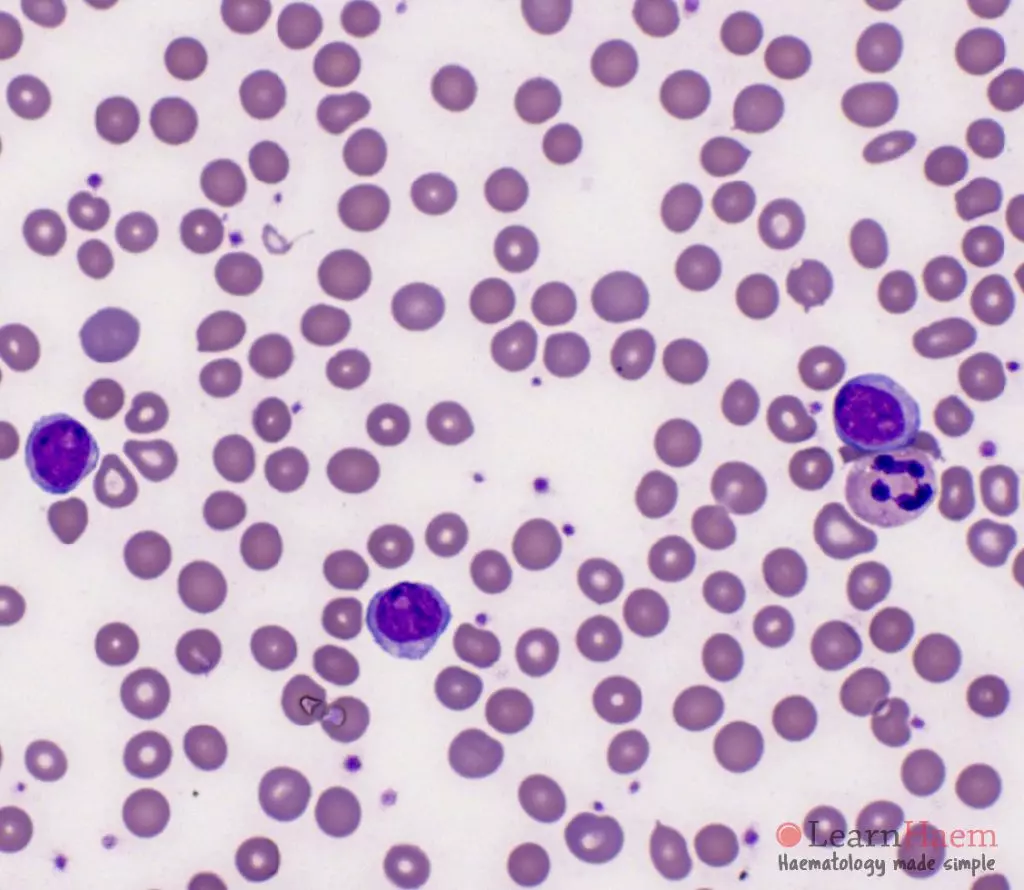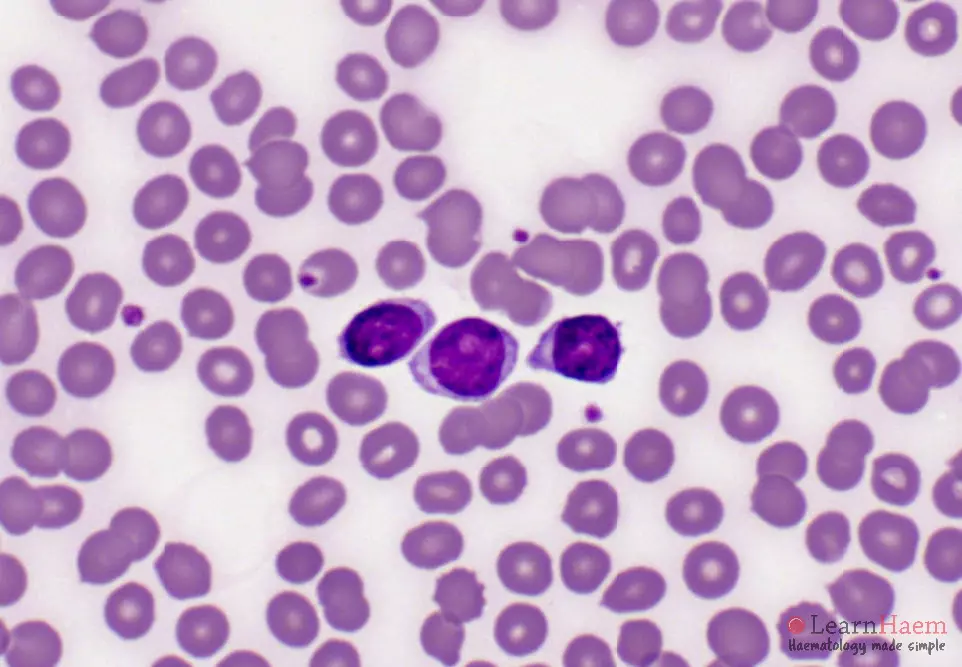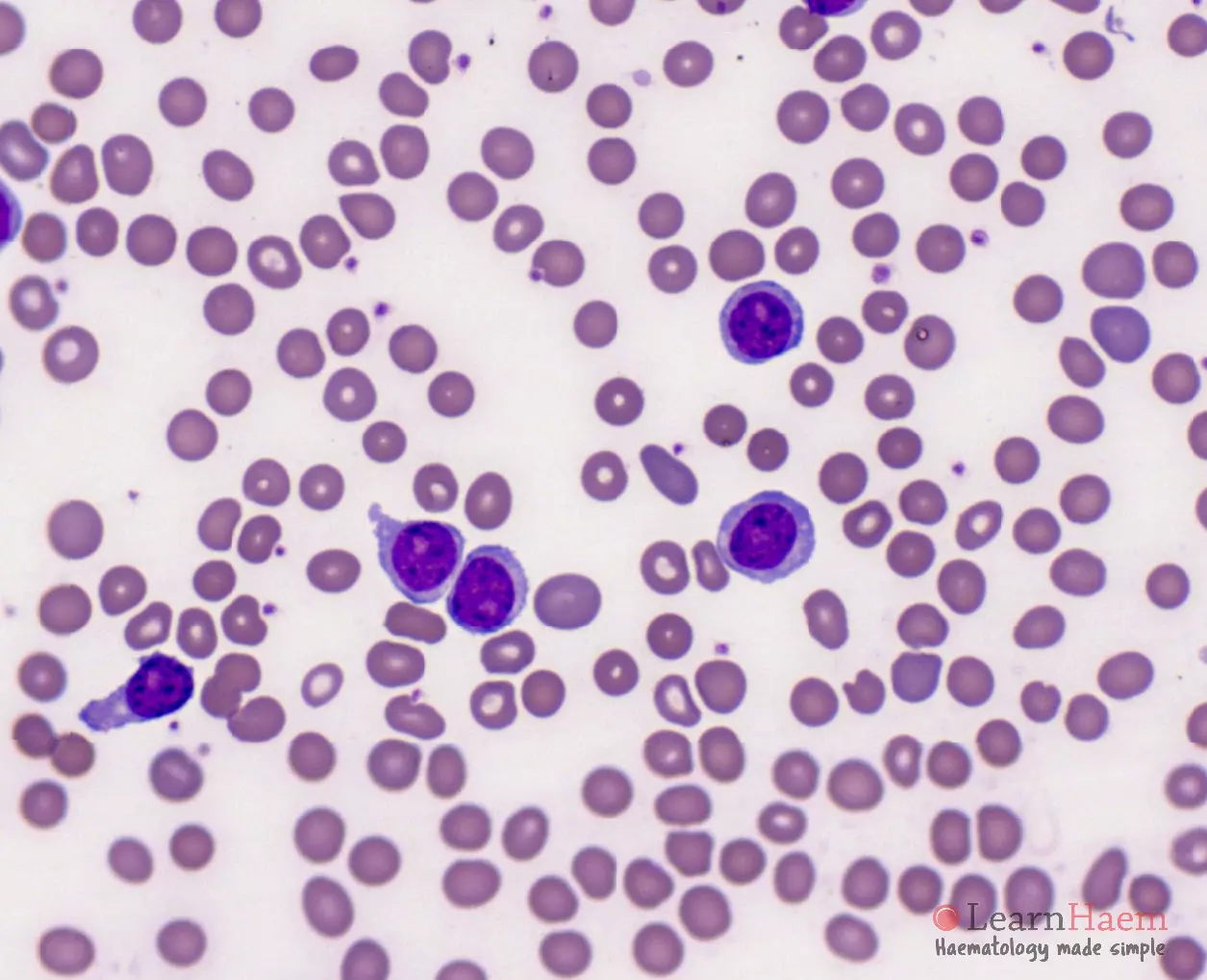Morphological features
- Usually moderate lymphocytosis (not as high as T-PLL).
- Large, atypical lymphoid cells.
- Mature nuclei with moderately clumped chromatin.
- Prominent nucleolus which is very easily visible (in contrast to T-PLL, which is usually indistinct).
- Regular nuclear and cytoplasmic contours.
- Large amounts of weakly-basophilic cytoplasm with no blebbing.




0 x


0 x


0 x


0 x


0 x


0 x
Distinguishing T-PLL from B-PLL
| Feature | B-PLL | T-PLL |
|---|---|---|
| Cytoplasm | Large amounts | Minimal |
| Blebbing | None | Cytoplasmic projections in some cells |
| Nucleoli | Prominent | Subtle and indistinct |
| Size | Large | Small to medium-sized |
| Nuclear outline | Regular | Irregular |
| Immunophenotype | CD20+/19+/SmIg++/22+ CD79a+/23-/5variable | CD3+/2+/5+/7++/1a-/TdT- Typically TCL1+ (>90%) and CD52+ Usually 4+/8- (60%), or 4+/8+ (25%) Characterised by lack of phenotypic aberrancy |
| Cytogenetics | 13q deletion 11q deletion 17p deletion 6q deletion | t(14;14) Inversion 14 Iso8q, trisomy 8, occasionally complex |


Leave A Comment